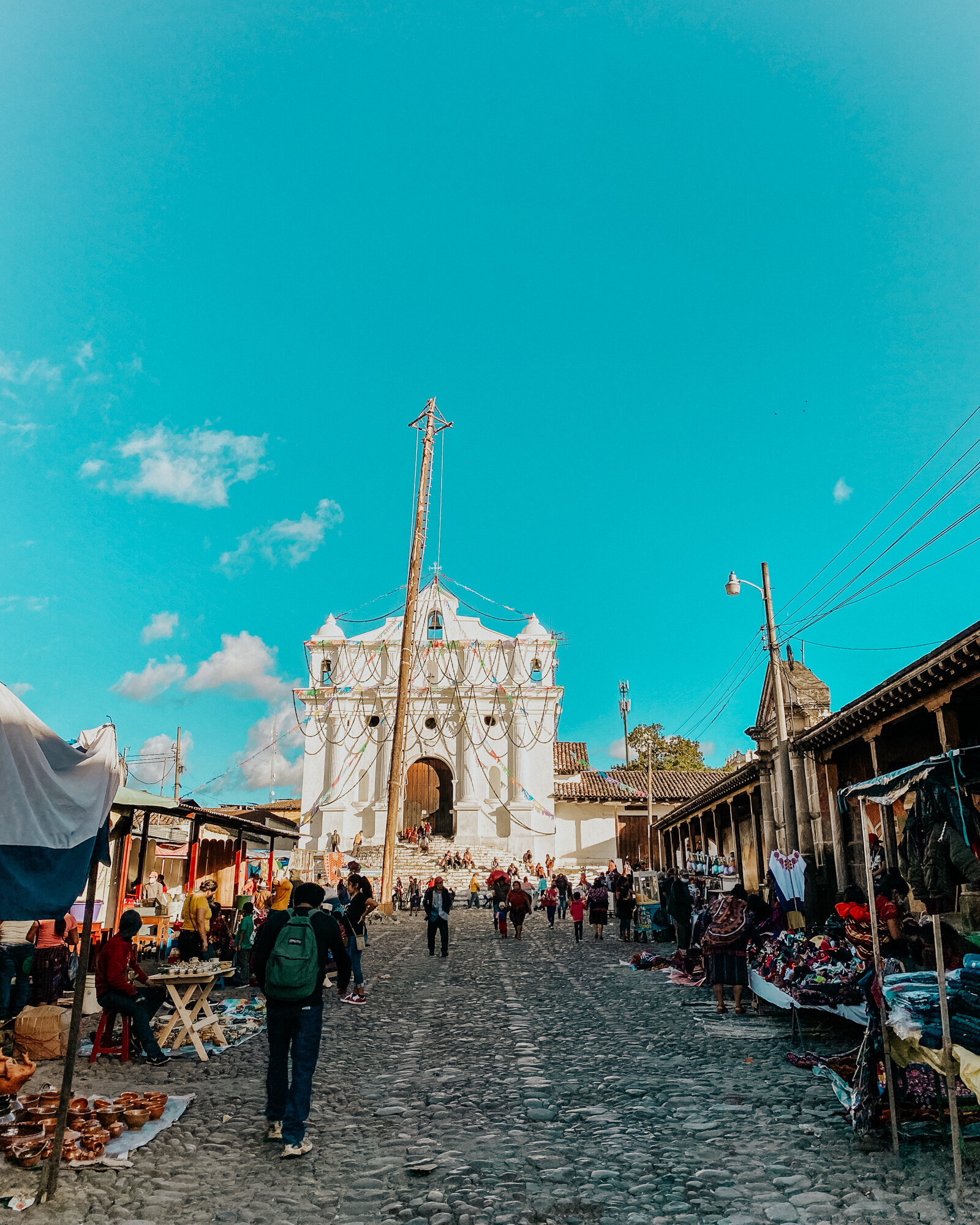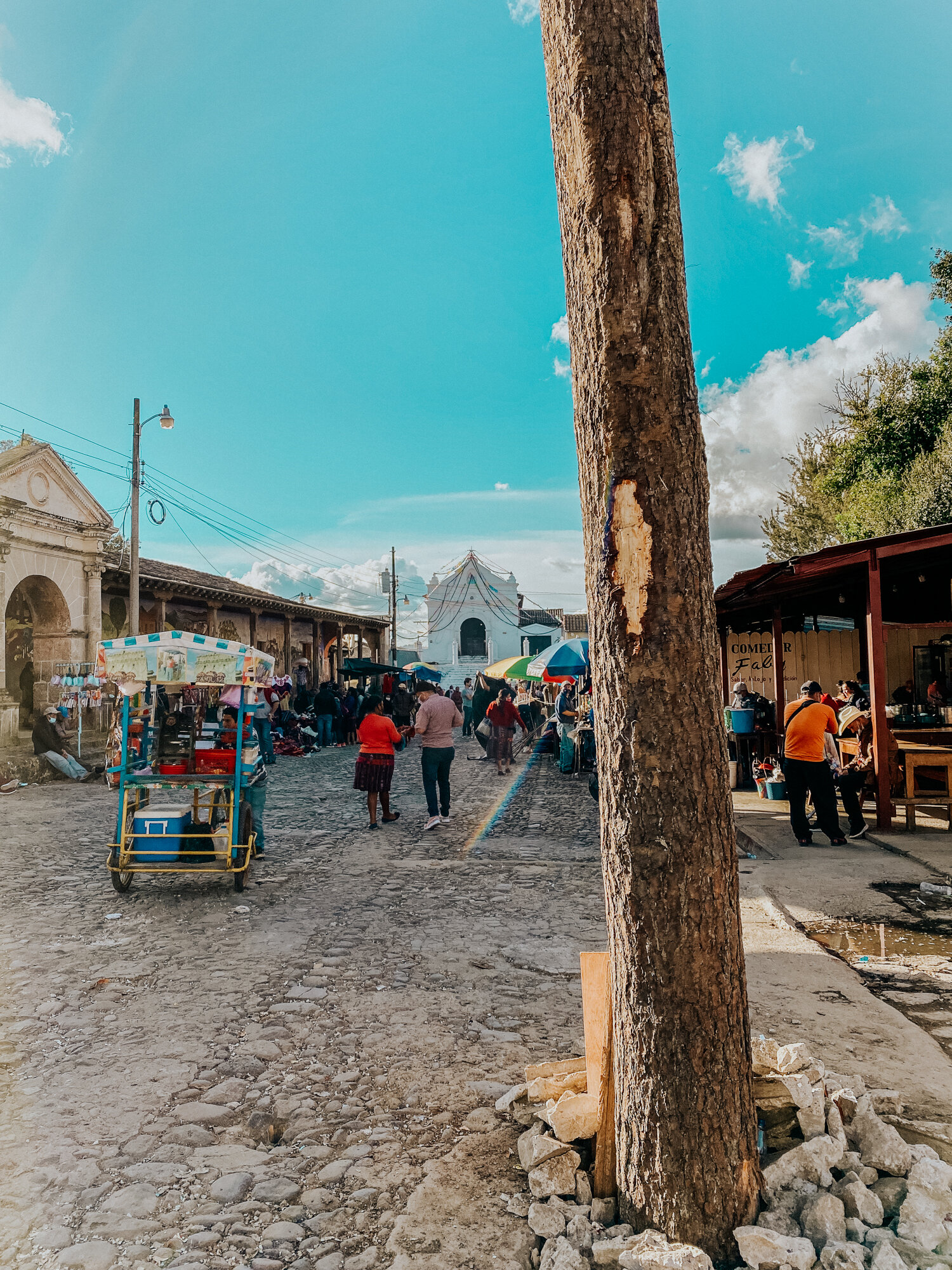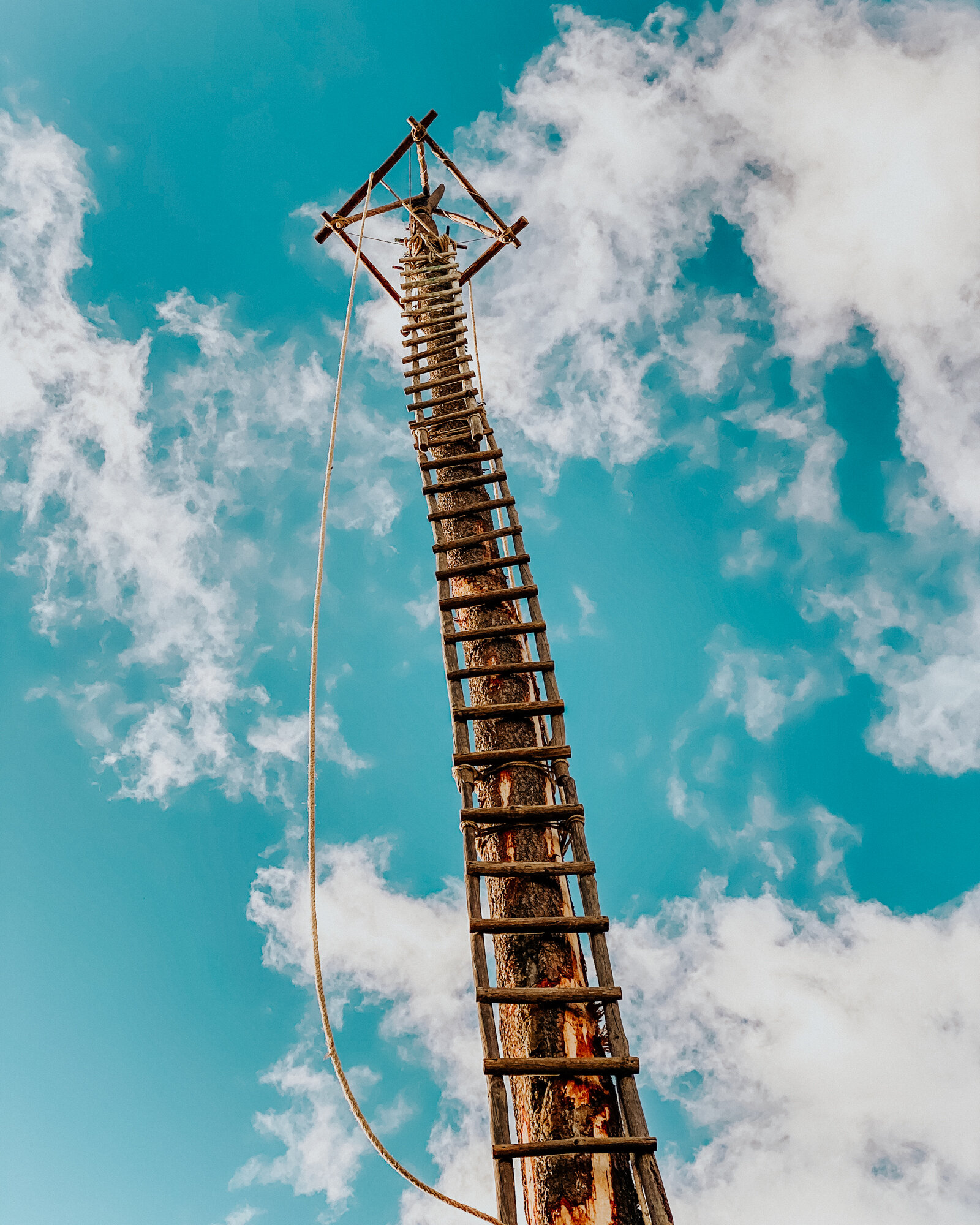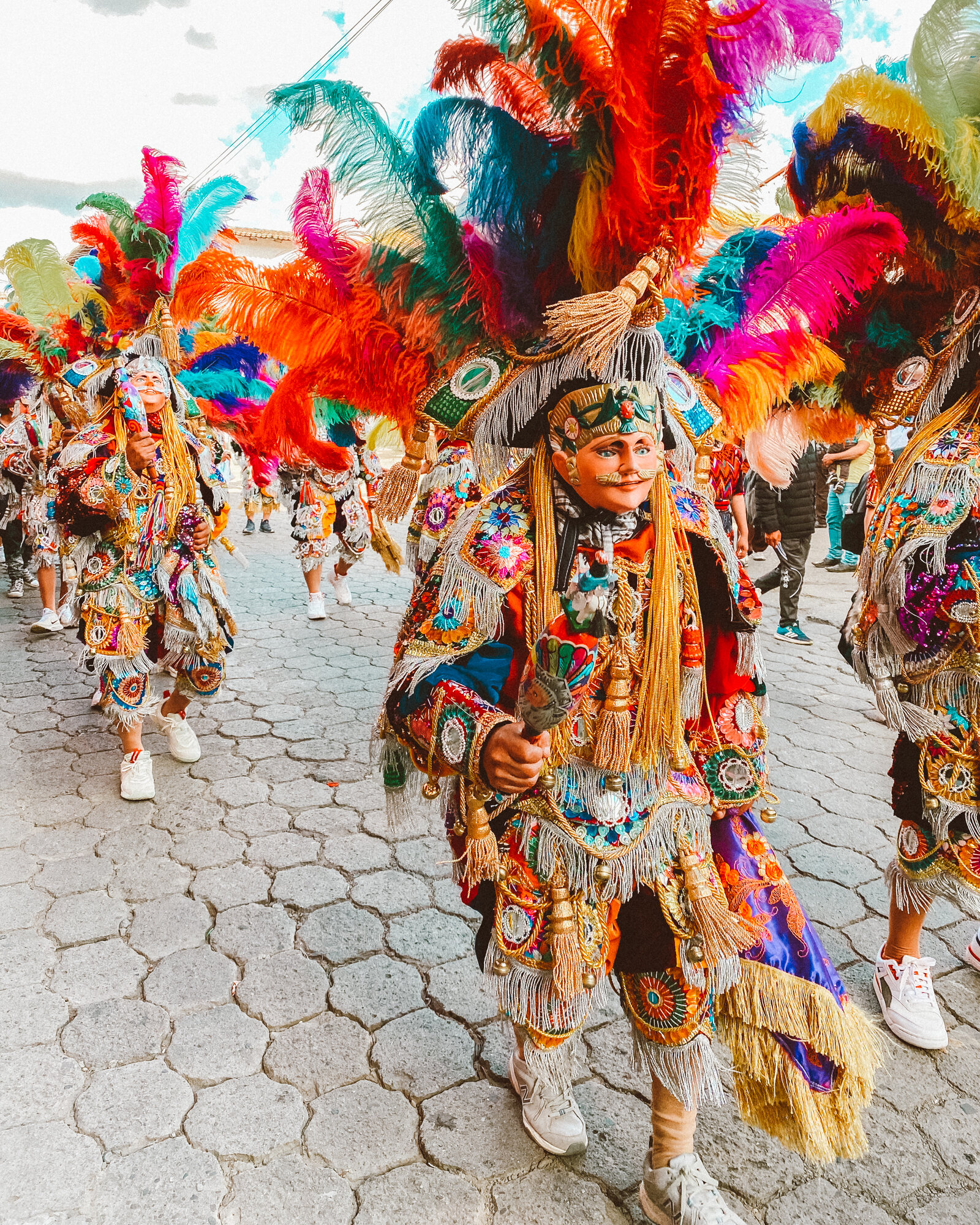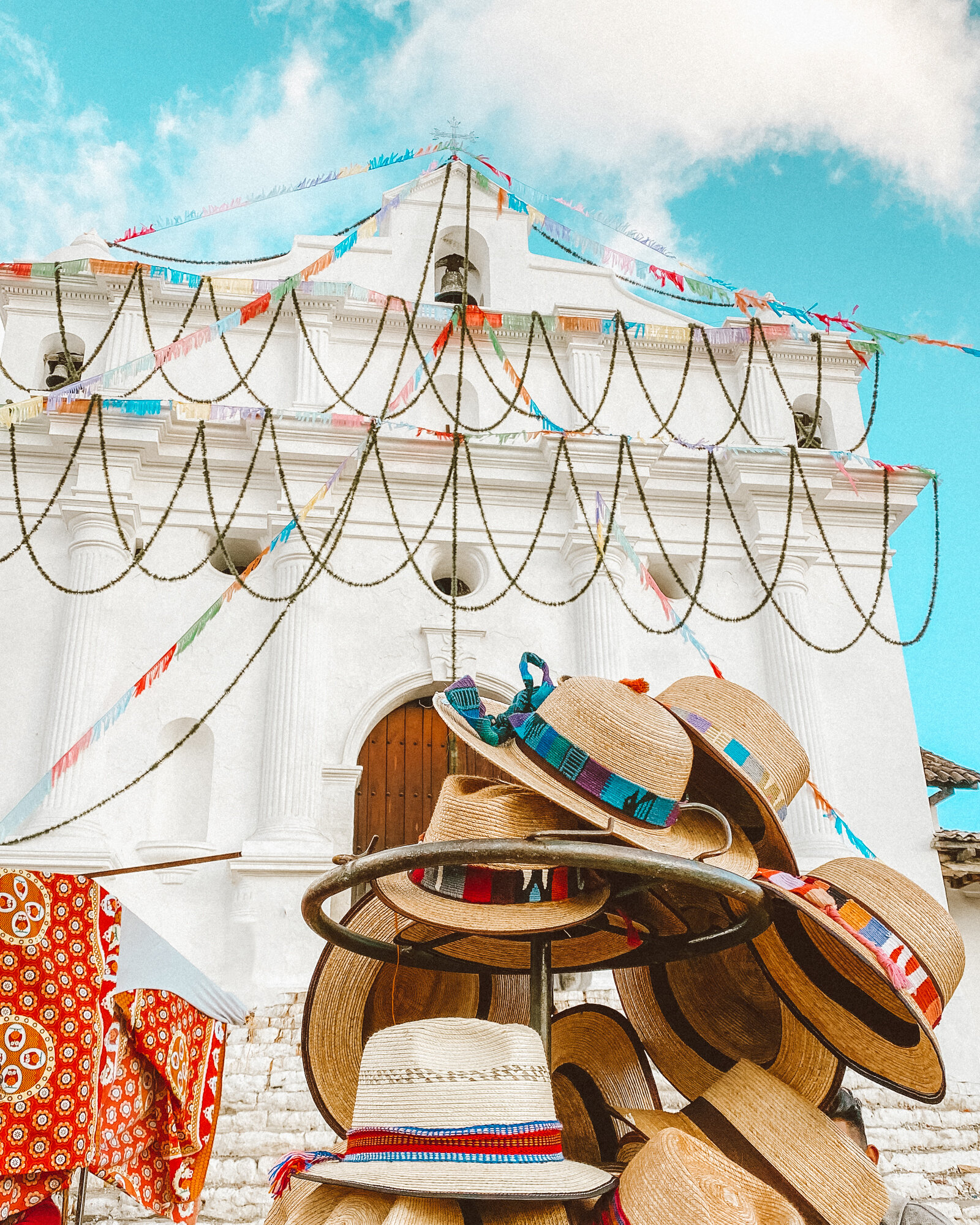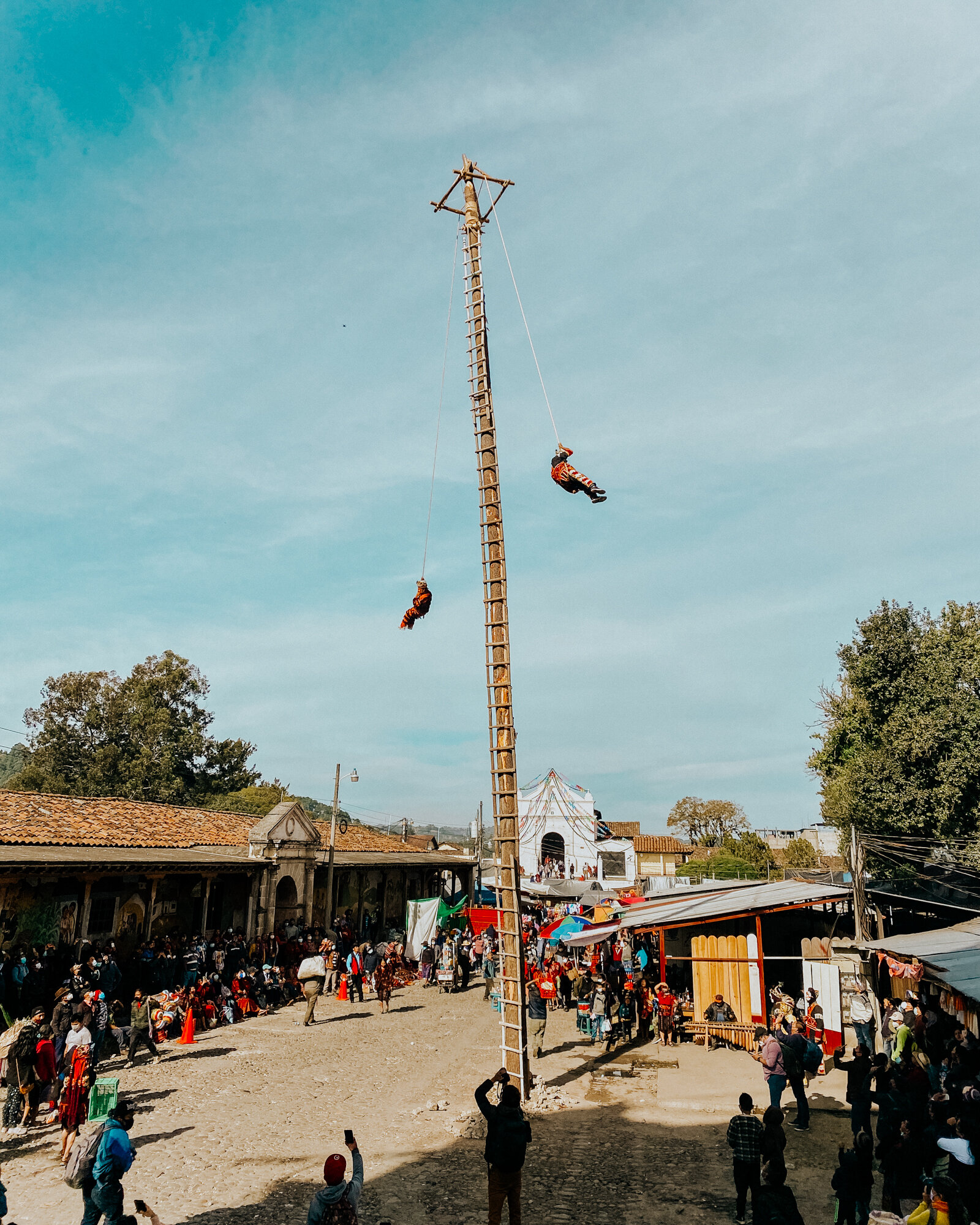Palo Volador Chichicastenango
What is the Palo Volador?
The Palo Volador is an ancient Maya tradition that still remains today amongst the K’iche’ indigenous people in Guatemala. During the Chichicastenango town festival they celebrate their patron saint Santo Tomas for nearly a week long. On one of these days, there is a tradition that includes a large tree trunk, a makeshift ladder, heavy duty rope and at least 6 valiant young men of the community.
The ceremony is called the Palo Volador which directly translates to Flying Pole. And that’s exactly what it is. Typically 2 - 4 men climb up a ladder nearly 100 feet (30 meters) without a harness to the top of this pole. At the top, they winde the flying ropes tightly and neatly around the post. At the base of these ropes is a loop where each flyer will comfortably slide in and place it below their waste serving as a seat. They simply lean back at the same time to create the perfect balance and away they go. Spinning perfectly back down to the ground.
While this is beyond fascinating, the history behind it is what really counts. Dating back to approximately 1500-2000 b.c.
Cultural and Spiritual Significance
Each man selected to fly has an important mission — to bring back messages from ancestors. This can not be achieved by just anyone. But by someone serious who has been assessed by the local village healer (shaman) to be sacred, clean and pure. The men spend a significant amount of time with their shaman, dieting and cleansing themselves prior to being ables to communicate with their ancestors.
In the Mayan culture, you do not say that someone is dead. You just say they “se fue al otro mundo” went to the other world. To the indigenous Mayas, one doesn’t die, just the spirit does. But the person does not. To them, death is something continuous.
In Chichicastenango you will find 3 important landmarks right in a row near the town plaza. The Santo Tomas Church, the Capilla del Calvario Church and a the Chichicastenango Cemetery. In Guatemala, cemeteries are notable because they are very colorful and the tombs are above ground.
The Santo Tomas Church prior to the Spanish arrival was known as the Church of the Living.
The Capilla del Calvario was the Church of the Death
The Chichicastenango Cemetery was the Place to Rest “Lugar de Descanso”
And Maybe you can guess where the Flying Pole was?
Yep, right between the Church of the Living and the Church of the Death. Because the Palo Voladores are the messengers between the Living and the Dead.
Currently, they still make sure to assemble the pole exactly in the same lineage.
Want to see the Palo Volador?
This indigenous town festival occurs in mid-December every year— usually around December 17th to the December 22nd. If you would like to learn more, you can contact this friendly guide. He sat with us for over an hour explaining the significance of the Palo Volador. Jose Pol: + 502 4404 0352
Thanks for reading. And as always . . . Be thoughtful. Stay kind.
♡ Alyssa
Follow along on instagram (@alyssaya) for more about Guatemala, ethical fashion, responsible travel and globally minded topics!
En Español!
¿Qué es el Palo Volador?
El Palo Volador es una tradición ancestral Maya que aun se mantiene entre el pueblo indígena K’iche’ en Guatemala. Durante la fiesta patronal de Chichicastenango donde se celebra al patrono Santo Tomas por casi una semana, uno de estos días es la tradición que incluye un tronco de árbol largo, una escalera improvisada, un lazo fuerte y al menos 6 jóvenes valientes de la comunidad.
La ceremonia se llama Palo Volador, y eso es exactamente lo que es. Normalmente 2 - 4 hombres suben la escalera de casi 100 pies (30 metros) sin un arnés hasta la cima the este palo. En la cima, ellos enrollan el lazo volador con fuerza alrededor del tronco. Al final de estos lazos hay una abertura donde cada volador se mete sin esfuerzo y se coloca cómodamente debajo de la cintura, utilizándolo como un asiento. Ellos simplemente se recuestan al mismo tiempo para poder crear balance y así se van. Dando vueltas de regreso al suelo.
Mientras esto es realmente fascinante, la historia detrás es lo que realmente cuenta. Se remonta aproximadamente al 1500-2000 A.C.
Significado Cultural y Espiritual
Cada hombre seleccionado para viajar tiene una misión importante - traer de regreso mensajes de los ancestros. Esto no puede ser hecho por cualquier persona. Solo es posible por alguien realmente serio que haya sido evaluado por el curandero de la comunidad (shaman) para ser sagrado, limpio y puro. Los hombres pasan un tiempo significativo con el sacerdote maya, haciendo dieta y limpias antes para que puedan ser capaces de comunicarse con sus ancestros.
En la cultura maya, no se dice que alguien está muerto. Simplemente dices que “se fue al otro mundo”. Para los indígenas mayas, uno no muere, solo el espíritu muere. Para ellos, la muerte es algo continuo.
En Chichicastenango, encontrará 3 sitios importantes en fila cerca de la plaza central. La Iglesia de Santo Tomás, la Capilla del Calvario y el Cementerio de Chichicastenango. En Guatemala, los cementerios son notables porque son muy coloridos y las tumbas sobre el suelo.
La Iglesia de Santo Tomás antes de la llegada de los españoles se conocía como la Iglesia de la Vida.
La Capilla del Calvario fue la Iglesia de la Muerte
El Cementerio de Chichicastenango fue el Lugar de Descanso.
¿Y tal vez puedas adivinar dónde estaba el palo?
Sí, justo entre la Iglesia de la Vida y la Iglesia de la Muerte. Porque los Palo Voladores son los mensajeros entre los Vivos y los Muertos.
¿Quieres ver el Palo Volador?
Este festival lo celebran a mediados de diciembre de cada año, generalmente alrededor del 17 de diciembre al 22 de diciembre. Si desea más información, puede comunicarse con esta guía. El se sentó con nosotros durante más de una hora explicando el significado del Palo Volador. Jose Pol: + 502 4404 0352
♡ Alyssa
Sígueme en Instagram (@alyssaya) para obtener más información sobre Guatemala, la moda ética, y viajes responsables.




